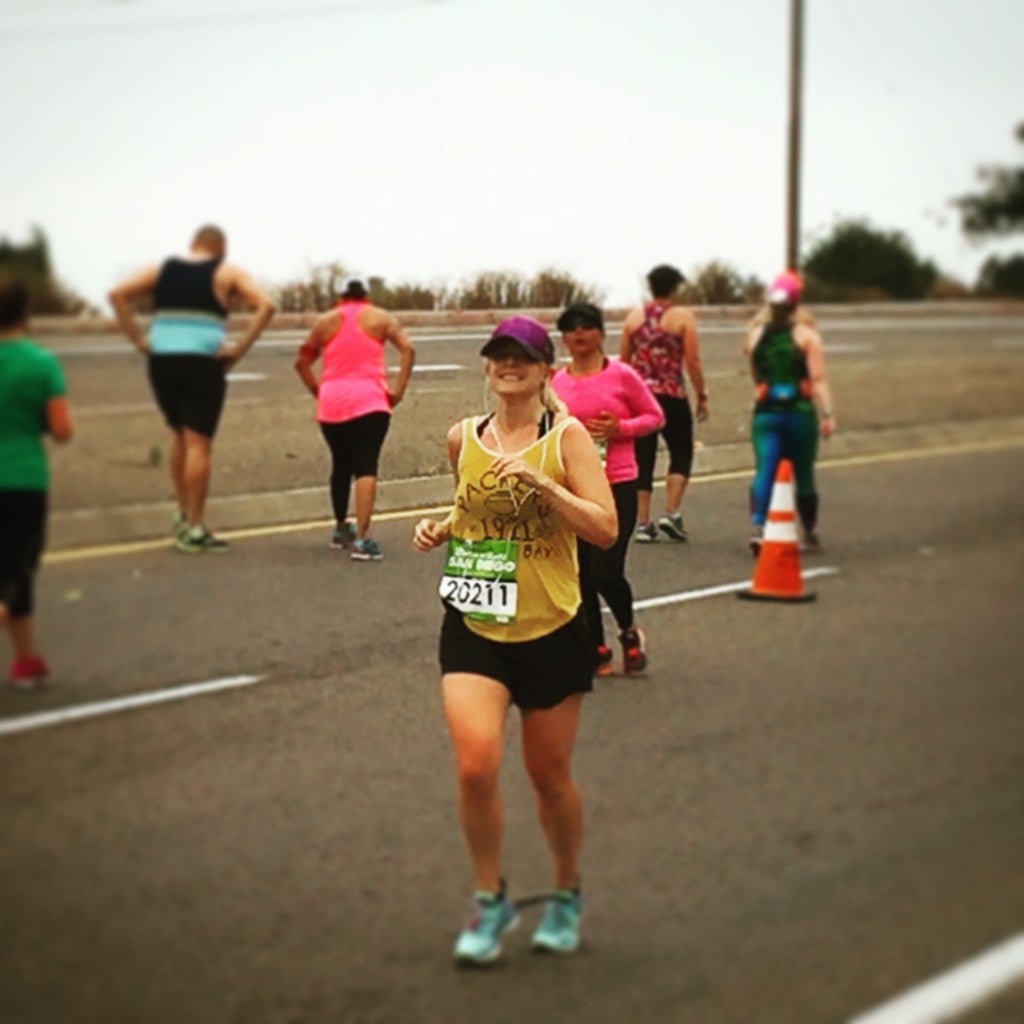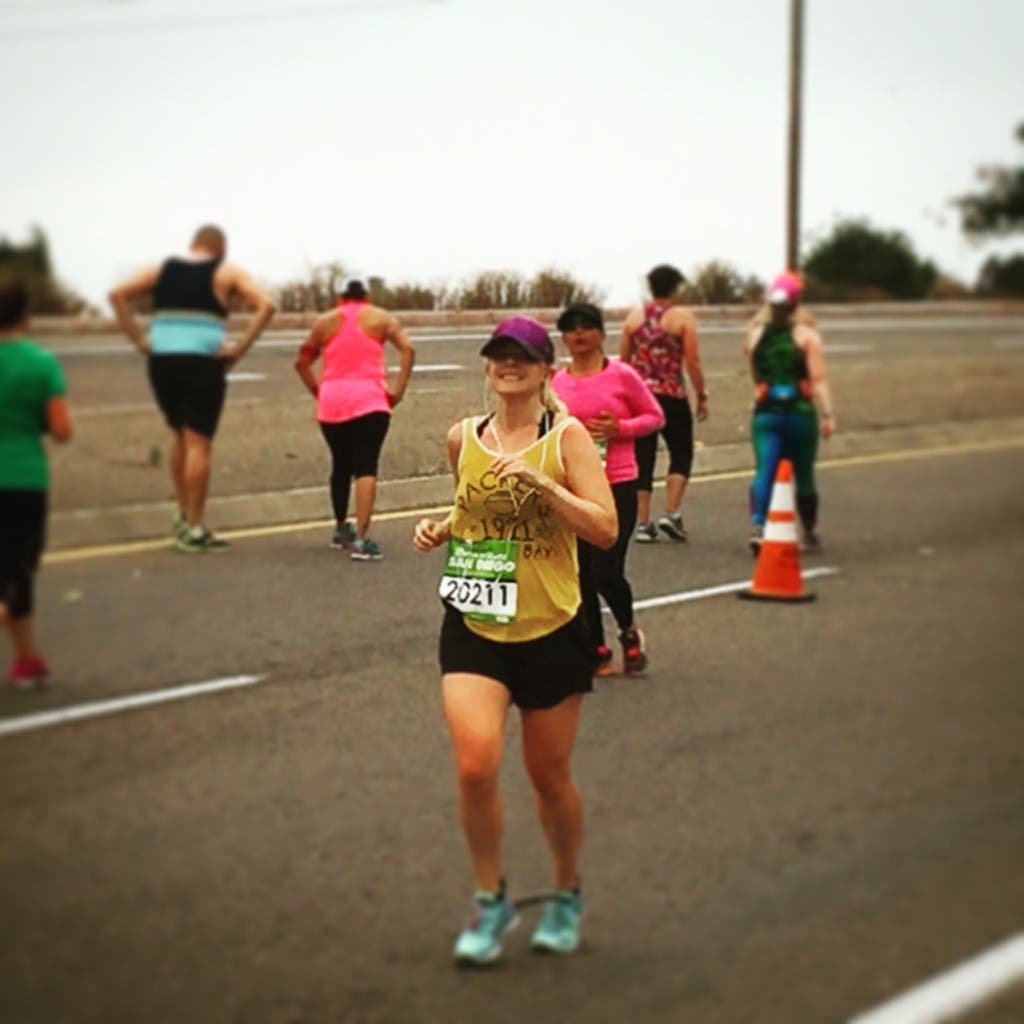10 Takeaways From My Very First Marathon


Two weeks ago I ran 26.2 of the longest miles of my life at the Suja Rock ‘n’ Roll San Diego Marathon and ½ Marathon. The training was hard, the race was even harder and the finish-line feeling was well worth all of the work. I am not a fast or competitive runner, but my love for running and a great challenge have made me always want to train and complete a full marathon. As I look back on my entire training journey, here are ten things I learned and wanted to share with any fellow first-time marathoner:
Your training will not be perfect.
I trained for 6 months using the Women’s Running marathon beginner training plan. The first few weeks I followed it to a T but kept getting sick (see below), which forced me to rest for extended periods of time. I was so stressed out about missing some of my critical long runs and felt like I was so behind in training. It turns out your body has a way of telling you it needs rest just like it has a way of bouncing back from that rest, and it felt like I hadn’t taken any time off.
Keep Your Immune System Strong
I cannot stress this one enough—if I had to do one thing over again it would be this. I viewed running as being the only healthy thing I needed to do for my body. I was running more than ever, which means I was healthier than ever, right? Wrong. Running is great for your body and health, but running long distances compromises your immune system. This means you need find ways to take and increase your vitamins and electrolytes during training!
My good friend Jessie—editor in chief and giver of daily motivation—gave me great advice: get protein within one hour of your runs and drink an electrolyte beverage every day. I started adding protein powder to post-run smoothies, had one to two Nuun tablets daily (which are AMAZING) and made sure to sleep in on weekends—all of this made a huge difference, and I stayed healthy for the rest of my training.
Just Rest
I like to do something physical every day, and rest days left me anxious. Although I knew my body needed the rest, it was extremely hard for me to not move. But not moving was probably the smartest thing I did. My body needed and craved rest days and my running benefited from it. It’s okay to rest!
Running Buddies Make Training Suck Less
I did every long run solo because I needed to. Long runs were a major mental and physical hurdle that I had to get through weekly. However, my shorter runs during the week went faster when I had someone to run with. Marathon training forced me to get out of my shell, to stop being so self conscience about my running pace and to start enjoying something I loved to do with people I like. Plus, it made 6 miles go by very quickly!
Support Is Sweet
Marathon training seems like a singular sport, but there is no doubt my training affected the people closest to me, since most of them were not runners. My training plan altered social calendars, sleep schedules and travel plans for six months!
My husband was on call during my long runs to bring me water, my family was super supportive and friends would remember my long runs and send me good luck texts! Training is tough, but getting motivation from the people around you (especially Team WR) made me feel like I could always do this.
Do A Race Rehearsal For Your First Marathon
I didn’t do a lot of things right, but this rehearsal was key for me. I did a race rehearsal on my longest training run. This meant that I treated my 21-mile long run like it was race day. I ate the exact food I planned to eat on race eve, wore the same outfit, woke up early, fueled properly and went through the same motions as if I was heading the start line. Doing this and feeling good on my long run gave me confidence with what I could do on race day.
The Wall is Actually A Real Thing
Everyone I know told me about this wall that you will hit around mile 20. It became almost as popular as the actual Wall (Any G.O.T fans out there?), and it was what I was most nervous about going into race morning. However, knowing this would hit during my race allowed me to mentally prep for how to overcome it. The wall got me around mile 21.8 as I was approaching a 2-mile hill, and it was every bit as painful as expected. I put my head down and kept telling myself to put one foot in front of the other. I climbed the hill and got past my mental and physical wall.
Create Realistic Finish Goals
I did not want to create a goal finish time for my first marathon. I wanted to be proud of my accomplishment at the finish line, not upset that I was a few minutes short from a goal. Instead, I made my mission to run the entire thing (including that 2-mile hill at mile 22!). Since I wasn’t stressed to beat a time, I could focus on finishing the race and actually did end up running a faster pace than planned.
Plan For Spectator Spots
My husband, parents (who flew in from Vegas) and sister-in-law were on the course by 7 a.m. to cheer me on. They had studied the course and road closure grids and I knew exactly where they were going to be, which gave me something to look forward to during the race. I’ll never forget my husband’s face at mile 18, which made me feel unstoppable.
The Finish Line Feeling Is Unbelievable
Mile 25 was a dream. All the pain in my legs, feet, etc., seemed to subside and I felt like I was flying—there was no stopping me until I crossed that finish line. My pace picked up and I ran faster than I had ever run before—okay, not really, but it sure felt like it! I was going to be a marathon finisher (sometimes I still get chills thinking about now).
As I crossed the finish line it hit me: I did it! Six months of early wake-up calls, long runs, bad days, injuries and so much more led me to this moment, and it was COMPLETELY WORTH IT.
That night and for the next several days I wore my finisher’s jacket like a champ. I was so proud of myself.